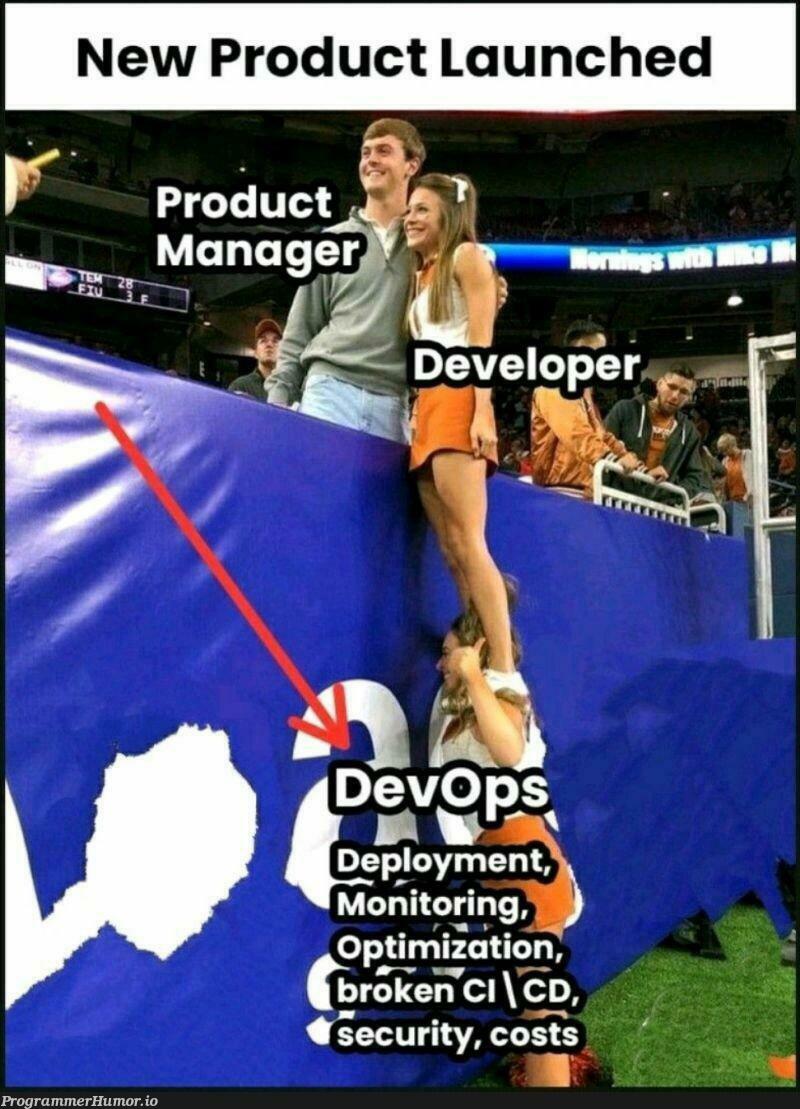This week, we spotlight the transformative power of DevOps certifications. Dive into how these credentials can bolster your skills, align with industry trends, and advance your career. Discover top certifications from AWS, Docker, Kubernetes, Azure, and more, plus tips for choosing and acing the right one for you!
- AWS Certified Solutions Architect - Professional
- AWS Certified Security - Specialty
- AWS Certified Advanced Networking - Specialty
- Docker Certified Associate (DCA)
- Certified Kubernetes Administrator (CKA)
- Prometheus Certified Associate (PCA)
- Microsoft Certified: DevOps Engineer Expert
- GitOps Certification with Argo
- Working with GitHub Actions in the Enterprise
- Red Hat Certified Specialist in Developing Automation with Ansible Automation Platform
- Red Hat Certified Specialist in Managing Automation with Ansible Automation Platform
- HashiCorp Certified: Terraform Associate
- HashiCorp Certified: Vault Associate
For more details, please refer to the following link

DevOps Tools: 🔧
This week's focus is on Ansible AWX, the dynamic open-source automation platform transforming the DevOps landscape. Discover how AWX simplifies complex operations, boosts efficiency, and seamlessly integrates into your workflow, all while fostering collaboration.
Ansible AWX Overview:AWX provides a web-based user interface, REST API, and task engine built on top of Ansible. It is one of the upstream projects for Red Hat Ansible Automation Platform.Key Features:User-friendly web interface.RESTful API for integrations.Efficient task engine for automation.Job scheduling and real-time updates.Support for multi-playbook workflows.Role-based access control for security.Benefits in DevOps:Simplifies automation tasks.Increases operational efficiency.Ensures consistent deployments.Enhances team collaboration.Scalable to meet growing infrastructure needs.Cost-effective as an open-source tool.Implementation:Involves setting up a Linux server, installing Docker, Docker-Compose, and AWX.Applications:Automated configuration management.Continuous deployment processes.Routine IT operations automation.Complex workflow automation.Best Practices:Integrate with version control systems.Conduct regular backups.Utilize role-based access control.Implement monitoring and logging.Challenges:Initial setup complexity.Resource requirements.Learning curve for Ansible beginners.Integration with Other Tools:Seamlessly integrates with various DevOps tools through its REST API.Future of Automation:Continues to play a significant role in evolving DevOps practices with strong community support.
In summary, Ansible AWX is a robust, open-source automation platform that enhances Ansible's capabilities, making it more accessible and manageable for DevOps teams.
For more details, please refer to the following link

You can refer the github project for more details as well
If you want to see how the upstream product Ansible Automation platform looks, you can refer to the following YouTub video.
DevOps How-Tos: 📘
Understanding and Managing Permissions for Docker Bind Mounts
Introduction:
When working with Docker, a common challenge that developers and system administrators face is managing permissions for bind mounts. Bind mounts, a Docker feature that allows you to mount specific volumes from the host to the container, maintain the permissions they have on the host system. This can lead to confusion and issues if not properly understood and managed. In this post, we will explore how Docker handles permissions for bind mounts and provide guidance on managing these permissions effectively.
Understanding Docker Bind Mounts:
First, it's crucial to understand what bind mounts are in the context of Docker. Unlike Docker volumes, which are managed by Docker and are isolated from the host file system, bind mounts are directories or files from the host system that are mounted into the container. This means that any changes made to the files in the bind mount from within the container will directly affect the host system.
Permissions in Docker Bind Mounts:
Permissions and ownership of files and directories in bind mounts are exactly the same as they are on the host system. Docker does not alter these permissions when mounting them into the container. This design choice ensures safety and consistency, as changing host file permissions automatically could lead to serious system issues.
Changing Permissions on the Host:
Since Docker won’t change permissions for bind-mounted volumes, any required permission changes must be made on the host system before mounting. This can be done using standard Linux commands like chmod for permission changes and chown for ownership changes. For example:
bashCopy codesudo chown -R user:group /path/to/volumesudo chmod -R 775 /path/to/volume
Replace user:group with the appropriate user and group names, and /path/to/volume with the path to the directory you intend to mount.
Best Practices:
Understand the Implications: Be aware that changes you make to the host directories' permissions will affect everything else that uses these directories.Safety First: Be cautious when changing permissions, especially with system directories or sensitive files.Consistency: Maintain consistent permissions between your development, testing, and production environments to avoid unexpected behavior.
Conclusion:
Managing permissions for Docker bind mounts requires a solid understanding of how Docker interacts with the host system's file system. By making the necessary permission changes on the host system and following best practices, you can ensure that your Docker containers interact with bind-mounted volumes securely and effectively. Remember, with great power comes great responsibility, especially when dealing with system permissions and Docker.
DevOps Concepts: 🧠
This week, our spotlight is on Canary Deployments: a DevOps strategy revolutionizing how we roll out software updates. We delve into its risk-reducing approach, offering a controlled, user-focused method for introducing new features. Discover the benefits, implementation tactics, and best practices to seamlessly integrate this technique into your workflow.
Concept: Canary Deployments involve releasing a new version of an application to a small subset of users before a full-scale rollout, akin to using canaries as early-warning signals in coal mines.Advantages:Reduces risk by limiting exposure to a small user base.Provides real-time feedback on performance in the production environment.Allows for a controlled, gradual rollout, ideal for complex applications.Focuses on user experience, ensuring new updates don’t negatively impact users.Implementation Steps:Establish clear metrics for success evaluation.Use tools that support canary deployments in CI/CD pipelines.Segment users thoughtfully for the release.Continuously monitor the deployment for issues.Scale up gradually if successful; have a rollback plan ready for failures.Challenges and Solutions:Address complexity with automated tools and clear processes.Make informed decisions for user segmentation.Use expertise in data analysis for interpreting deployment feedback.Best Practices:Automate the deployment process.Maintain open communication within the team.Keep detailed documentation of all deployment phases.Use each deployment as a learning opportunity to refine future processes.Conclusion: Canary deployments are a strategic approach in DevOps, offering safer and user-centric software updates. Success hinges on the right mix of tools, well-defined processes, and skilled execution.
For more details on the topic please refer to the following link

DevOps Resources: 📚
This week's featured resource is the AWS whitepaper "Introduction to DevOps on AWS." This comprehensive guide provides a deep dive into DevOps practices and tools, focusing on enhancing organizational delivery of applications and services with high velocity and quality. The whitepaper covers essential DevOps practices like Continuous Integration (CI), Continuous Delivery (CD), Infrastructure as Code (IaC), and monitoring and logging, emphasizing how AWS services can facilitate the DevOps journey. It's an invaluable resource for understanding how to build a robust CI/CD pipeline, manage cloud resources effectively, and integrate key practices for successful DevOps adaptation in the AWS environment.
For more information,
DevOps Events: 🗓️
This week we feature a video that is a comprehensive presentation on Amazon VPC Lattice given by Samuel Baruffi, a Solutions Architect with Amazon Web Services. The talk was part of the Salt Lake City DevOps Days last year. Samuel begins by discussing the evolution of application networking and the challenges faced when deploying applications across multiple VPCs and accounts in AWS. He then introduces VPC Lattice, a service designed to simplify networking for applications by enabling seamless connectivity across VPCs in the same region, regardless of overlapping IP addresses. VPC Lattice offers a managed control plane, observability, and sophisticated security policies. Samuel also covers its benefits, including increased developer productivity, enhanced security, and reduced operational costs. The presentation concludes with a live demonstration of setting up and using VPC Lattice, highlighting its ease of use and capabilities in handling complex network configurations.
Community Spotlight: 💡
This section is meant for community Q&A and community voice. So if you are reader of this newsletter tell us about yourself. If you have something to say or share, please let us know and we might feature you in this section.
Last but not the Least: 🎬
DevOps engineers after a project success! 😆



